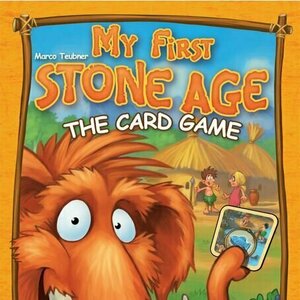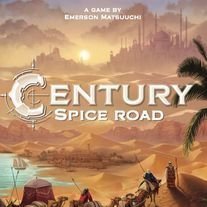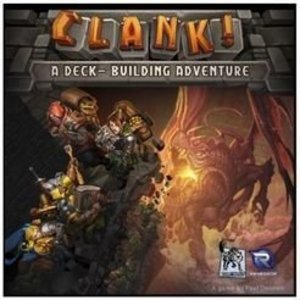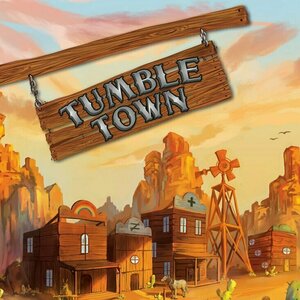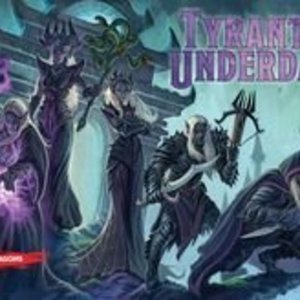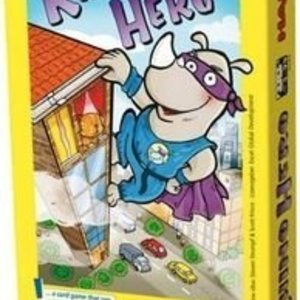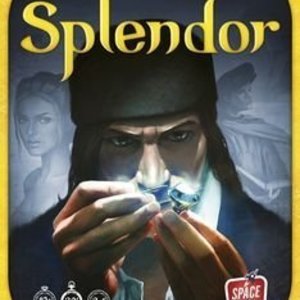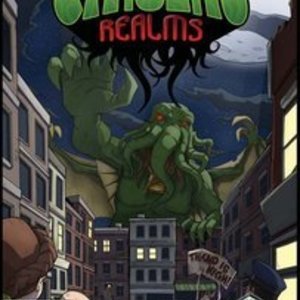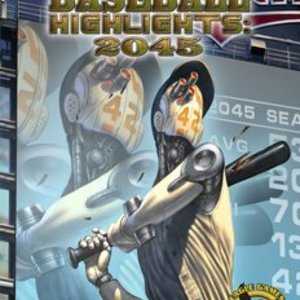Search
Search results
Purple Phoenix Games (2266 KP) rated My First Stone Age: The Card Game in Tabletop Games
Apr 7, 2021
The Kids Table series from Purple Phoenix Games seeks to lightly explore games that are focused toward children and families. We will do our best to give some good insight, but not bog you down with a million rules…
My First Stone Age: The Card Game (that’s a mouthful) is a quick and easy card game that can be played by any child of any age assuming they have the attention span for it (mine didn’t the first couple times). It focuses on memory skills and set collection mechanics.
Setting up is easy. Shuffle the Hut Cards and give each player one. Shuffle the Goods Cards and deal nine face-down in a circle. Place the rest of the deck in the middle of the circle face-up. Plop Martin, the mammeeple (mammoth meeple) on or near one of the face-down cards and you’re ready to play!
The winner of the game is they who is able to build three huts first. Players can build huts by moving Martin around the circle clock-wise 1-4 spaces, collecting the card if it matches the players’ hut card, and then building the hut by discarding the goods used. Each turn players will be able to move Martin, flip a card to see if it matched their hut card, and build a hut. The game continues in this fashion until the winner has built their third hut!
This is a very light game that has very simple rules, and not a ton for the players to have to keep track of or remember. Perfect for young ones and not-so-young ones alike. We love the artwork on the cards and being able to move a large mammeeple around the table searching for fish or arrowheads. While the game is competitive in that there is a winner and therefore also losers, we mitigate that by saying that, “if I win then you get to tickle me, but if you win I get to tickle you!” That usually quells any upset youngsters pretty quickly.
We love this game and it is a great first step into gateway games that target older audiences. It is simple and quick, and a minimal investment for a good few minutes!
My First Stone Age: The Card Game (that’s a mouthful) is a quick and easy card game that can be played by any child of any age assuming they have the attention span for it (mine didn’t the first couple times). It focuses on memory skills and set collection mechanics.
Setting up is easy. Shuffle the Hut Cards and give each player one. Shuffle the Goods Cards and deal nine face-down in a circle. Place the rest of the deck in the middle of the circle face-up. Plop Martin, the mammeeple (mammoth meeple) on or near one of the face-down cards and you’re ready to play!
The winner of the game is they who is able to build three huts first. Players can build huts by moving Martin around the circle clock-wise 1-4 spaces, collecting the card if it matches the players’ hut card, and then building the hut by discarding the goods used. Each turn players will be able to move Martin, flip a card to see if it matched their hut card, and build a hut. The game continues in this fashion until the winner has built their third hut!
This is a very light game that has very simple rules, and not a ton for the players to have to keep track of or remember. Perfect for young ones and not-so-young ones alike. We love the artwork on the cards and being able to move a large mammeeple around the table searching for fish or arrowheads. While the game is competitive in that there is a winner and therefore also losers, we mitigate that by saying that, “if I win then you get to tickle me, but if you win I get to tickle you!” That usually quells any upset youngsters pretty quickly.
We love this game and it is a great first step into gateway games that target older audiences. It is simple and quick, and a minimal investment for a good few minutes!
Krojollen (1 KP) rated Century: Spice Road in Tabletop Games
Apr 4, 2018
Easy to learn (2 more)
Good replay value
Simple mechanics, only have a few options each turn
A really simple game to learn and just as easy to teach others. I've played it as a duel and with up to 5 people and it works well with all numbers. You do have to adjust your strategy based upon how many players there are, but this adds to the replay value. The only real downside is that there are some cards that are very powerful and can be game winning if got early on. A great game to get in to card collecting/deck building games.
Griffin (480 KP) rated Clank!: A Deck-Building Adventure in Tabletop Games
Feb 9, 2019
The art and visuals of the game are stunning! (1 more)
Cool concept to combine a deck builder with a tactical movement system
Lots of pieces that make setting up feel unnecessarily long (2 more)
A lot of luck for rather the right card is available on your turn
Gameplay lacks intuitive mechanics
Not un-fun but very clanky!(clunky)
While the deck building aspects and tactical gameplay are both decently designed on their own, the combination of the two makes for a rather clunky gameplay experience. Combine that with a very odd way to resolve the game and you get a game that is still decently fun, it just leaves you wanting more (but of a different game).
Purple Phoenix Games (2266 KP) rated Tumble Town in Tabletop Games
Mar 5, 2020
Fun fact about me: I used to live in Le Claire, Iowa (birthplace of “Buffalo Bill” Cody) on a street named Wild West Drive. While the town named many of their streets after American West figures and items, it was not your typical Iowa ghost town – if there are such things. That said, I do have an affinity for the Wild West in my gaming preferences, so when I heard about a dice/building game with an American West theme designed by Kevin Russ (who also recently designed Calico) I was immediately interested. But how does this one… stack up?
Tumble Town is dice rolling, structure building, drafting game with variable player powers. You are charged with choosing building plans to be added to Main Street of Tumble Town. You do this throughout the game by selecting the plans that will make best use of the resources (dice) you gain. The buildings that you construct may allow you special powers to be used on future turns, or one-time bonuses to be used once built. The player who can turn the greatest profit (in terms of VP) at the end of the game will be the winner!
DISCLAIMER: We were provided a prototype copy of this game for the purposes of this review. These are preview copy components, and the final components will definitely be different from these shown. Also, it is not my intention to detail every rule in the game, as there are just too many. You are invited to back the game through the Kickstarter campaign, from your FLGS, or through any other retailers stocking it after fulfillment. -T
To setup, deal each player a packet of starting components: a unique Horse card, two reference cards, Storehouse card, Main Street card, and two brown (they are red in the prototype) dice to be rolled and placed within the Storehouse. Shuffle and display the 1-, 2-, and 3-cactus building cards per the rulebook instructions to form the market. Set aside a number of each die type per the rulebook (both the building cards and dice are determined by number of players). Determine the first player and give them the first player token (a colorful rubber potted cactus). Players will connect their two Main Street cards at the central icon to create a two-card street (we chose the wagon wheel – Easy) and the game can begin!
Turns in Tumble Town consist of four mini-phases that flow into each other rather naturally. The first phase will have the players choosing a revealed building plan card from the offer market. The face-down draw stack will inform the active player as to how many and which type of dice they must draw and roll. Once they have these dice in their Storehouse, the player may now build plans using the dice they control. Buildings can be constructed and placed right onto Main Street, or be placed on the plan card to be placed on Main Street on a later turn. If the player has collected more dice than their Storehouse can hold, they must discard any of the dice they wish. This concludes a turn and the next player can begin their turn.
Certain iconography on the building plan cards allow players to use special powers throughout the game once built, and there are three types. Cards with the silvery bottom panel of symbols and the 1x notation are powers that must be used only once and only when the building is constructed. These powers could be collecting a die of the player’s choice, or receiving various dice counters. The building plan cards that feature a circular arrow notation are powers that can be used once per turn, every turn, if wished. These powers are found on each player’s Horse as well and can be adjusting a die’s face value, or re-rolling two dice, as examples. The third type of power is from the golden paneled cards that have an arrow pointing to a vertical line. These powers are only activated at the end of the game and mostly include scoring variances, like 1VP for each building a player has constructed that has a vulture icon (or a windmill, for example) featured on the card art.
Once a building is erected, the player may choose to place it onto their Main Street cards. When they place them, the player will need to choose where on Main Street these buildings should live. Like Bob Ross always says, “There are no mistakes, just happy accidents.” A player can place their buildings anywhere they wish on Main Street, but the Main Street cards will give extra bonuses to those players who plan ahead and place their buildings strategically. Some plots will ask for a building of a specific height (one die high or three dice high). Some will ask for the base level of the structure to be made of a specific material/die color (brown wood, black coal, silver metal, and gold… gold). Extra points are awarded if one-die-width alleyways are allotted, and these Main Street placements can score a bunch of endgame points.
Turns can be very quick or very deliberate, depending on the types of players involved. AP-prone players will take longer on their turns as they internalize all possibilities of their rolled results, while people like me just fly by the seats of our breeches. The game continues in this fashion: four mini-phases of drafting cards from the market, grabbing the associated dice, rolling them, and attempting to erect the best buildings on Main Street until two dice pools contain two or fewer dice. The current turn order finishes and the game is over.
Components. Again, this is a prototype copy of the game, and the publisher was decent enough to include a listing of items to be improved in the final version (like the red dice being poured brown in final – that really messed up someone’s strategy during a play-through for us because they kept forgetting that red is actually brown). The overall art style is very simplistic and I do NOT mean that negatively. The graphics and artwork are great, and give exactly what is needed without being so distracting that you cannot concentrate on your strategy. The dice are normal dice quality (that always seem to roll poorly when I’m rolling… hmm…). Once you see the photos of how the game will look during production, you will appreciate how great this is going to look on the table. No problems with components at all, save for the red vs. brown debacle that happened on our table. I really hope they keep the awwwwesome rubber cactus first player marker because it’s amazing.
I absolutely loved this one. I have always enjoyed using items for purposes other than originally intended – in this case, using dice as building materials. Of course, playing any game with dice introduces a bit of luck and instability in strategy, but Tumble Town offers quite a bit of manipulation of dice rolls that keeps almost all dice results feasible and useful. I really enjoyed the stacking, the quick turns, and the desperation when someone takes the last wood die when I was gunning for a wood-based building on my next turn. This game is light, but is chocked full of difficult decisions and luck of the roll. Tumble Town is for people who enjoy the rolling and stacking from FUSE (minus the frenzy), and the spatial building placement chaining of Villages of Valeria.
If this is the game for you, then we highly encourage you to check out the Kickstarter campaign which is running until Thursday, March 26. Tumble Town has already exceeding the funding goal at time of this review, but all future pledges will contribute to stretch goals that will improve components and add other components (spoiler?). So get out there and build up Tumble Town, ya yella-bellied greenhorns!
Tumble Town is dice rolling, structure building, drafting game with variable player powers. You are charged with choosing building plans to be added to Main Street of Tumble Town. You do this throughout the game by selecting the plans that will make best use of the resources (dice) you gain. The buildings that you construct may allow you special powers to be used on future turns, or one-time bonuses to be used once built. The player who can turn the greatest profit (in terms of VP) at the end of the game will be the winner!
DISCLAIMER: We were provided a prototype copy of this game for the purposes of this review. These are preview copy components, and the final components will definitely be different from these shown. Also, it is not my intention to detail every rule in the game, as there are just too many. You are invited to back the game through the Kickstarter campaign, from your FLGS, or through any other retailers stocking it after fulfillment. -T
To setup, deal each player a packet of starting components: a unique Horse card, two reference cards, Storehouse card, Main Street card, and two brown (they are red in the prototype) dice to be rolled and placed within the Storehouse. Shuffle and display the 1-, 2-, and 3-cactus building cards per the rulebook instructions to form the market. Set aside a number of each die type per the rulebook (both the building cards and dice are determined by number of players). Determine the first player and give them the first player token (a colorful rubber potted cactus). Players will connect their two Main Street cards at the central icon to create a two-card street (we chose the wagon wheel – Easy) and the game can begin!
Turns in Tumble Town consist of four mini-phases that flow into each other rather naturally. The first phase will have the players choosing a revealed building plan card from the offer market. The face-down draw stack will inform the active player as to how many and which type of dice they must draw and roll. Once they have these dice in their Storehouse, the player may now build plans using the dice they control. Buildings can be constructed and placed right onto Main Street, or be placed on the plan card to be placed on Main Street on a later turn. If the player has collected more dice than their Storehouse can hold, they must discard any of the dice they wish. This concludes a turn and the next player can begin their turn.
Certain iconography on the building plan cards allow players to use special powers throughout the game once built, and there are three types. Cards with the silvery bottom panel of symbols and the 1x notation are powers that must be used only once and only when the building is constructed. These powers could be collecting a die of the player’s choice, or receiving various dice counters. The building plan cards that feature a circular arrow notation are powers that can be used once per turn, every turn, if wished. These powers are found on each player’s Horse as well and can be adjusting a die’s face value, or re-rolling two dice, as examples. The third type of power is from the golden paneled cards that have an arrow pointing to a vertical line. These powers are only activated at the end of the game and mostly include scoring variances, like 1VP for each building a player has constructed that has a vulture icon (or a windmill, for example) featured on the card art.
Once a building is erected, the player may choose to place it onto their Main Street cards. When they place them, the player will need to choose where on Main Street these buildings should live. Like Bob Ross always says, “There are no mistakes, just happy accidents.” A player can place their buildings anywhere they wish on Main Street, but the Main Street cards will give extra bonuses to those players who plan ahead and place their buildings strategically. Some plots will ask for a building of a specific height (one die high or three dice high). Some will ask for the base level of the structure to be made of a specific material/die color (brown wood, black coal, silver metal, and gold… gold). Extra points are awarded if one-die-width alleyways are allotted, and these Main Street placements can score a bunch of endgame points.
Turns can be very quick or very deliberate, depending on the types of players involved. AP-prone players will take longer on their turns as they internalize all possibilities of their rolled results, while people like me just fly by the seats of our breeches. The game continues in this fashion: four mini-phases of drafting cards from the market, grabbing the associated dice, rolling them, and attempting to erect the best buildings on Main Street until two dice pools contain two or fewer dice. The current turn order finishes and the game is over.
Components. Again, this is a prototype copy of the game, and the publisher was decent enough to include a listing of items to be improved in the final version (like the red dice being poured brown in final – that really messed up someone’s strategy during a play-through for us because they kept forgetting that red is actually brown). The overall art style is very simplistic and I do NOT mean that negatively. The graphics and artwork are great, and give exactly what is needed without being so distracting that you cannot concentrate on your strategy. The dice are normal dice quality (that always seem to roll poorly when I’m rolling… hmm…). Once you see the photos of how the game will look during production, you will appreciate how great this is going to look on the table. No problems with components at all, save for the red vs. brown debacle that happened on our table. I really hope they keep the awwwwesome rubber cactus first player marker because it’s amazing.
I absolutely loved this one. I have always enjoyed using items for purposes other than originally intended – in this case, using dice as building materials. Of course, playing any game with dice introduces a bit of luck and instability in strategy, but Tumble Town offers quite a bit of manipulation of dice rolls that keeps almost all dice results feasible and useful. I really enjoyed the stacking, the quick turns, and the desperation when someone takes the last wood die when I was gunning for a wood-based building on my next turn. This game is light, but is chocked full of difficult decisions and luck of the roll. Tumble Town is for people who enjoy the rolling and stacking from FUSE (minus the frenzy), and the spatial building placement chaining of Villages of Valeria.
If this is the game for you, then we highly encourage you to check out the Kickstarter campaign which is running until Thursday, March 26. Tumble Town has already exceeding the funding goal at time of this review, but all future pledges will contribute to stretch goals that will improve components and add other components (spoiler?). So get out there and build up Tumble Town, ya yella-bellied greenhorns!
Russell Evans (179 KP) rated Tyrants of the Underdark in Tabletop Games
Feb 24, 2020 (Updated Feb 24, 2020)
Interesting deck building mechanics (3 more)
Several different viable strategic options
Quick paced, easy to learn to play
Great artwork on cards
A quick paced game of fantasy deck building strategy, skilfully mixed with area control
This game mixes up a couple of game genres, but it balances them really well. I brought this game as my teenage son is a D&D fan and we have played it many times now. We’ve enjoyed it, so we also brought the expansion decks – which, for me, is always the sign of a good game. The game is pretty easy to learn, and once you have the grasp of the game mechanics, the turns flow smoothly and quickly. A 3 player game takes us just over an hour to play.
A brief overview of the Game
Each player controls a Drow house in the Underdark, competing to take control by getting the most Victory Points at the end of the game. Victory points are gained from various sources, for example, controlling locations on the board, assassinating your rivals troops, card abilities, cards owned in your deck or promoted.
Each turn the player draws cards from their own deck that determine what they can do in their turn. There are several different strategies you can pursue to try and win – subterfuge, violence, using spies, gathering a powerful deck etc. You can use influence that you gain in the game to buy new cards from the communal market to expand your deck and buy new minions with a range of different abilities. Random card drawers in the market can be frustrating when your opponents get the card you want straight after your turn, but that’s the nature of the game. Some of the cards can seem super–powered but there are several of these, so we find it balances out overall.
The promotion mechanic is rather interesting - it gives you the dilemma of promoting a card to gain increased victory points but means that the card (and its abilities) aren’t available for you to use for rest of the game. Do you hang on to it a bit longer to use that awesome ability and risk the game ending before you can promote that card for loads more victory points?
There are 4 decks included in the base game; Drow, Dragons, Elementals and Demons and they all play very differently. You use a mix of 2 decks each game, so that adds a bit of variety and re-playability. (Add in the 2 from the expansion for a bit more – Aberrations and Undead.)
Also worth mentioning; the artwork on the cards is nice and the board is good too.
I think Tyrants of the Underdark is a very enjoyable game and it gets a solid 9/10. I just wish there were some more expansions for it.
A brief overview of the Game
Each player controls a Drow house in the Underdark, competing to take control by getting the most Victory Points at the end of the game. Victory points are gained from various sources, for example, controlling locations on the board, assassinating your rivals troops, card abilities, cards owned in your deck or promoted.
Each turn the player draws cards from their own deck that determine what they can do in their turn. There are several different strategies you can pursue to try and win – subterfuge, violence, using spies, gathering a powerful deck etc. You can use influence that you gain in the game to buy new cards from the communal market to expand your deck and buy new minions with a range of different abilities. Random card drawers in the market can be frustrating when your opponents get the card you want straight after your turn, but that’s the nature of the game. Some of the cards can seem super–powered but there are several of these, so we find it balances out overall.
The promotion mechanic is rather interesting - it gives you the dilemma of promoting a card to gain increased victory points but means that the card (and its abilities) aren’t available for you to use for rest of the game. Do you hang on to it a bit longer to use that awesome ability and risk the game ending before you can promote that card for loads more victory points?
There are 4 decks included in the base game; Drow, Dragons, Elementals and Demons and they all play very differently. You use a mix of 2 decks each game, so that adds a bit of variety and re-playability. (Add in the 2 from the expansion for a bit more – Aberrations and Undead.)
Also worth mentioning; the artwork on the cards is nice and the board is good too.
I think Tyrants of the Underdark is a very enjoyable game and it gets a solid 9/10. I just wish there were some more expansions for it.
Purple Phoenix Games (2266 KP) rated Rhino Hero in Tabletop Games
Jun 12, 2019
What’s that on top of that building? It’s a…..rhino? Yes – you’re not hallucinating! Your neighborhood caped-crusader is indeed none other than Rhino Hero! Although not necessarily the most nimble of superheroes, he always gives 100% when it comes to protecting his people!
Rhino Hero is a dexterity-based game of literal hand management in which players are trying to use their cards to build the tallest tower possible. In simple terms, picture a ‘Jenga’ of sorts mixed with building a house of cards – instead of removing lower tiles and adding them to the top, though, you’re just adding cards to the narrow tower in an attempt to build the highest possible building for our superhero to traverse! The game is very easy to learn, simple to play, and entertaining for all involved! Here’s how it works: All players start with a hand of 5 roof cards. Each player, on their turn, will first place wall cards (as indicated) on the previously played roof card. Once that is done, the active player will then choose a roof card from their hand to play on top of the newly ‘built’ walls. Play continues until either one player has played all of their roof cards, or until a player causes the tower to fall over! Dexterity is important – how steady can you keep your hand as you build the tower? But strategy is key too – some roof tiles allow players to take special actions (play an additional roof card, reverse turn order, etc.), so timing your use of these powers is essential to success! Do you have the steadiness and strategy necessary to help our Hero on his quest for justice? Or will you end up as the clumsy sidekick who ruins the plan?
I thoroughly enjoy playing Rhino Hero. It’s such a fun and lighthearted little game that I can’t help but smile every time I play! One reason it’s so great is that it is extremely simple to learn, teach, and play. Playing with new players? Try Rhino Hero. Playing with children? Try Rhino Hero. Need something short and light to play between big games? Try Rhino Hero. It’s just a nice breathe of fresh air and I am almost always down to give it a couple of plays!
Another reason why I like Rhino Hero is that it’s more than just a dexterity game. Yes, the brunt of this game is centered around carefully building the tallest tower possible, but the card abilities take it to the next level. It adds an element of strategy that keeps players engaged beyond just needing a steady hand. How can you use your cards to best benefit you, or best block your opponents? It all depends on your current roof cards, so every game can require a different strategy!
If you’re looking for a short, light game, I hope you’ll consider Rhino Hero. It’s not the most strategic or cut-throat game out there, but it will definitely keep you engaged until the end – with pumping adrenaline and shaky hands (for me, at least). Purple Phoenix Games gives Rhino Hero a rhinoriffic 16 / 24.
https://purplephoenixgames.wordpress.com/2019/05/09/rhino-hero-review/
Rhino Hero is a dexterity-based game of literal hand management in which players are trying to use their cards to build the tallest tower possible. In simple terms, picture a ‘Jenga’ of sorts mixed with building a house of cards – instead of removing lower tiles and adding them to the top, though, you’re just adding cards to the narrow tower in an attempt to build the highest possible building for our superhero to traverse! The game is very easy to learn, simple to play, and entertaining for all involved! Here’s how it works: All players start with a hand of 5 roof cards. Each player, on their turn, will first place wall cards (as indicated) on the previously played roof card. Once that is done, the active player will then choose a roof card from their hand to play on top of the newly ‘built’ walls. Play continues until either one player has played all of their roof cards, or until a player causes the tower to fall over! Dexterity is important – how steady can you keep your hand as you build the tower? But strategy is key too – some roof tiles allow players to take special actions (play an additional roof card, reverse turn order, etc.), so timing your use of these powers is essential to success! Do you have the steadiness and strategy necessary to help our Hero on his quest for justice? Or will you end up as the clumsy sidekick who ruins the plan?
I thoroughly enjoy playing Rhino Hero. It’s such a fun and lighthearted little game that I can’t help but smile every time I play! One reason it’s so great is that it is extremely simple to learn, teach, and play. Playing with new players? Try Rhino Hero. Playing with children? Try Rhino Hero. Need something short and light to play between big games? Try Rhino Hero. It’s just a nice breathe of fresh air and I am almost always down to give it a couple of plays!
Another reason why I like Rhino Hero is that it’s more than just a dexterity game. Yes, the brunt of this game is centered around carefully building the tallest tower possible, but the card abilities take it to the next level. It adds an element of strategy that keeps players engaged beyond just needing a steady hand. How can you use your cards to best benefit you, or best block your opponents? It all depends on your current roof cards, so every game can require a different strategy!
If you’re looking for a short, light game, I hope you’ll consider Rhino Hero. It’s not the most strategic or cut-throat game out there, but it will definitely keep you engaged until the end – with pumping adrenaline and shaky hands (for me, at least). Purple Phoenix Games gives Rhino Hero a rhinoriffic 16 / 24.
https://purplephoenixgames.wordpress.com/2019/05/09/rhino-hero-review/
The Marinated Meeple (1848 KP) rated Splendor in Tabletop Games
Mar 14, 2018
Simple and Fun (3 more)
Easy to Teach
Easy to learn
Great gateway game
The theme might not be amazing, but the art is solid, and the games for simplicity and elegance can't be beat.
My wife and I play this all the time, we go on vacation and play on the beach under a cabana. It's a simple engine building game, with simple mechanics, you either collect three different jewels or two of the same, or you buy a card using those jewels to get permanent jewels. You get victory points for the higher value cards which are harder to get. We tend to make the game longer by adding to the number of victory points needed to win, we play to 22.
jd2105 (10 KP) rated Valley of the Kings: Last Rites in Tabletop Games
Mar 21, 2020
Strategic Unique Deck Building Game
Very interesting deckbuilding game. This game ventures away a little bit from traditional deckbuilding games. Available cards to purchase are arranged in a pyramid with only being able to purchase from the bottom row only. Making purchases from the bottom of the pyramid allow cards from the top of the pyramid to fall to the bottom of the pyramid for purchasing. Certain cards can change the rules as many games do, such as purchasing cards any where on the pyramid.
Entombing is a new feature to this genre of games that really sets this deckbuilder apart from the rest. Entombing is actually set collecting within this deckbuilder. To entomb a card you simply put it aside in a pile to no longer use for the rest of the game. By entombing a card you can not use it's value for purchasing or it's special actions.
End game is based on how many cards you have entombed. The more sets you collect the more vp you score.
This game works best with 2-3 in my opinion, however this one of my favorite go to solo games.
Entombing is a new feature to this genre of games that really sets this deckbuilder apart from the rest. Entombing is actually set collecting within this deckbuilder. To entomb a card you simply put it aside in a pile to no longer use for the rest of the game. By entombing a card you can not use it's value for purchasing or it's special actions.
End game is based on how many cards you have entombed. The more sets you collect the more vp you score.
This game works best with 2-3 in my opinion, however this one of my favorite go to solo games.
Purple Phoenix Games (2266 KP) rated Cthulhu Realms in Tabletop Games
Jun 12, 2019
Cthulhu – a theme that is deeply rooted in the board gaming world. There are SO MANY Cthulhu-based games and spin-offs of standard games. Some people really dig the theme, and some people really don’t. So where does this particular game fall on the spectrum? Keep reading to find out!
In Cthulhu Realms, a deck-building game, you are a Cthulhu cultist that is trying to drive your rivals literally insane. By gathering followers, collecting artifacts, and discovering new locations, you will gain enough power to influence the sanity of those who would oppose you! On your turn, you will play cards from your hand to Conjure (acquire new cards from the communal pool), Draw/Discard cards, Gain/Lose Sanity, or Abjure (permanently discard cards from the game). The game ends when a player is reduced to zero sanity – and the player who has retained their sanity is the winner!
I love deck-building games. I really do. I think it’s a neat mechanic that allows you to customize your strategy with every play. So I enjoy playing Cthulhu Realms because of that element. And that’s kind of where my enjoyment ends with this game. Don’t get me wrong – it’s a decent game. I just have a couple of issues with the actual cards and abilities. The cards themselves are very reliant on iconography to communicate powers/abilities. Props to the player boards for having a quick reference for the basic actions, but I still always keep the rule sheet on hand for the in-depth explanation as I play. And even then, the rule sheet still has a bit of ambiguity on how some of the powers work. I wish they’d provided a couple of examples because sometimes I still get confused by certain combinations of icons. Just a little more detail in the rule sheet could alleviate some of the ambiguity of the icon abilities.
For card abilities, each individual card can have anywhere from 1-3 special abilities. The tricky thing is that the abilities do not all have to be used at the same time. So I could use 1 ability from a card, use an ability from a different card, and then come back to my first card and use another of it’s printed abilities. And with a hand of 5 cards every turn (not counting additional cards you may draw…), it can be hard to keep track of which abilities you’ve already used that turn. On top of that, many of the abilities have prerequisites – you can’t use that specific ability unless you’ve already played/have in play the requisite card. Some abilities only have 1 prerequisite, but some have 2, which just adds another layer of bookkeeping to your turns. Not only are you trying to remember which card abilities you’ve already used, but you’re also trying to keep track of your cards/actions that turn that could unlock other card abilities. The rule sheet suggests sliding a card to one side of your play area once you’ve used one of its powers. But again, if it has more than 1 ability on it, you’ve got to remember which ones you’ve used/haven’t used yet, regardless of where they are in your play area. This is a competitive game overall, but with all of these elements to track on your turns, it saps the tension from the game and makes it feel a little more luck-based than strategic.
To alleviate some of my grievances, I think the game could just have more cards with fewer abilities on each. That would make it much easier to execute all of your turns. And eliminate some of the ability prerequisites – having them on most of the abilities just adds another element for you to keep track of, and it feels a little unnecessary. If the turns were a little more clear and concise, I would like this game a lot more. It’s not bad, it just gets bogged down a little bit with too much action on your turns. That’s why Purple Phoenix Games gives Cthulhu Realms a 6/12.
https://purplephoenixgames.wordpress.com/2019/03/22/cthulhu-realms-review/
In Cthulhu Realms, a deck-building game, you are a Cthulhu cultist that is trying to drive your rivals literally insane. By gathering followers, collecting artifacts, and discovering new locations, you will gain enough power to influence the sanity of those who would oppose you! On your turn, you will play cards from your hand to Conjure (acquire new cards from the communal pool), Draw/Discard cards, Gain/Lose Sanity, or Abjure (permanently discard cards from the game). The game ends when a player is reduced to zero sanity – and the player who has retained their sanity is the winner!
I love deck-building games. I really do. I think it’s a neat mechanic that allows you to customize your strategy with every play. So I enjoy playing Cthulhu Realms because of that element. And that’s kind of where my enjoyment ends with this game. Don’t get me wrong – it’s a decent game. I just have a couple of issues with the actual cards and abilities. The cards themselves are very reliant on iconography to communicate powers/abilities. Props to the player boards for having a quick reference for the basic actions, but I still always keep the rule sheet on hand for the in-depth explanation as I play. And even then, the rule sheet still has a bit of ambiguity on how some of the powers work. I wish they’d provided a couple of examples because sometimes I still get confused by certain combinations of icons. Just a little more detail in the rule sheet could alleviate some of the ambiguity of the icon abilities.
For card abilities, each individual card can have anywhere from 1-3 special abilities. The tricky thing is that the abilities do not all have to be used at the same time. So I could use 1 ability from a card, use an ability from a different card, and then come back to my first card and use another of it’s printed abilities. And with a hand of 5 cards every turn (not counting additional cards you may draw…), it can be hard to keep track of which abilities you’ve already used that turn. On top of that, many of the abilities have prerequisites – you can’t use that specific ability unless you’ve already played/have in play the requisite card. Some abilities only have 1 prerequisite, but some have 2, which just adds another layer of bookkeeping to your turns. Not only are you trying to remember which card abilities you’ve already used, but you’re also trying to keep track of your cards/actions that turn that could unlock other card abilities. The rule sheet suggests sliding a card to one side of your play area once you’ve used one of its powers. But again, if it has more than 1 ability on it, you’ve got to remember which ones you’ve used/haven’t used yet, regardless of where they are in your play area. This is a competitive game overall, but with all of these elements to track on your turns, it saps the tension from the game and makes it feel a little more luck-based than strategic.
To alleviate some of my grievances, I think the game could just have more cards with fewer abilities on each. That would make it much easier to execute all of your turns. And eliminate some of the ability prerequisites – having them on most of the abilities just adds another element for you to keep track of, and it feels a little unnecessary. If the turns were a little more clear and concise, I would like this game a lot more. It’s not bad, it just gets bogged down a little bit with too much action on your turns. That’s why Purple Phoenix Games gives Cthulhu Realms a 6/12.
https://purplephoenixgames.wordpress.com/2019/03/22/cthulhu-realms-review/
Purple Phoenix Games (2266 KP) rated Baseball Highlights: 2045 in Tabletop Games
Jul 6, 2019
It’s 2045. Baseball has bored everyone to death (NOT my opinion – GO CUBS GO!). So Big Baseball has turned to employing robots and players have begun to improve their game by adding cybernetic body parts to themselves. This is the future in which I want to live. Editorializing aside, only the best and most exciting players can make in the new bigs. Will your team of Naturals, Cyborgs, and Robots claim victory, or will your players be bound for the minors – or worse, the scrap heap?
Baseball Highlights: 2045 is a dueling card game with an interesting twist. It uses elements of card drafting, hand management, take that, and deck building to weave a satisfying experience that can be enjoyed by baseball fans and non-fans. I will not go into explaining the entire rulebook here, but I do want to touch on some items that turn this into something more than your run-of-the-mill deck builder.
DISCLAIMER: This game has quite a few mini expansions. While we do have all the expansions in our collection, we will only be reviewing the base game (though I am sure there are some promo cards in my “base game”). Should we decide to review the expansions in the future, we will add it here or link to the full review. -T
Each player begins the game with a deck of starter players belonging to a generic team (Chicago, Detroit, San Francisco, etc). Each card has a combination of immediate actions, threatened base hits, pawn movement speed, and costs printed on them. By playing a card from your hand on your turn you will threaten a hit, cancel your opponent’s hit(s), and/or attempt to score your runners home. Here’s the twist. The Visitor player will play the first card and potentially threaten a hit. Play then stops and it is the Home player’s turn to try to affect the threatened hit(s) using a card from their hand. If they can cancel the hit, then the Visitor player’s plans are dashed and play returns to them to try to cancel the Home player’s now-threatened hits. This back and forth using different portions of each card is a little awkward to get used to, but after you get the hang of it, becomes a very cool little variation on the simplistic card value comparisons found in WAR.
After you play through your hand of cards and determine the mini-game winner, a phase of the game to draft “free agents” allows players to use icons on the cards to purchase stronger cards from the offer row. If the alternating play of the main game had your head spinning then deciding which of your teammates to replace with free agents will definitely cause some anxiety. But this is how your team improves. Do you get rid of the player that threatens Home Runs but provides you with zero purchasing power or do you oust him to the minors to call up Kris Correa? These are important decisions, coach!
Components. This game is basically a card duel game with player mats and tracking tokens that are completely unnecessary (but very nice). The cards are great quality! The individual player mats are a great place to organize your game cards and components. The pawns are just red, white, and blue wooden pawns. Nothing special there, but the colors are important and symbolize how fast the baserunners are. The components are great, and the insert is functional, so that’s a huge bonus for me.
Is the game good? Quite. I love the back and forth. I LOVE the baseball theme. I love the deck building aspect. I love being able to use this game as a tournament game, though I haven’t yet played it that way. Maybe soon! In any case, this is an excellent game and definitely worth taking a look at and trying for yourself. We at Purple Phoenix Games give this one an over the fence bomb of 9 / 12 (with special guest scorer Tony – I think Josh will like it, but I’m unsure if Bryan will).
Baseball Highlights: 2045 is a dueling card game with an interesting twist. It uses elements of card drafting, hand management, take that, and deck building to weave a satisfying experience that can be enjoyed by baseball fans and non-fans. I will not go into explaining the entire rulebook here, but I do want to touch on some items that turn this into something more than your run-of-the-mill deck builder.
DISCLAIMER: This game has quite a few mini expansions. While we do have all the expansions in our collection, we will only be reviewing the base game (though I am sure there are some promo cards in my “base game”). Should we decide to review the expansions in the future, we will add it here or link to the full review. -T
Each player begins the game with a deck of starter players belonging to a generic team (Chicago, Detroit, San Francisco, etc). Each card has a combination of immediate actions, threatened base hits, pawn movement speed, and costs printed on them. By playing a card from your hand on your turn you will threaten a hit, cancel your opponent’s hit(s), and/or attempt to score your runners home. Here’s the twist. The Visitor player will play the first card and potentially threaten a hit. Play then stops and it is the Home player’s turn to try to affect the threatened hit(s) using a card from their hand. If they can cancel the hit, then the Visitor player’s plans are dashed and play returns to them to try to cancel the Home player’s now-threatened hits. This back and forth using different portions of each card is a little awkward to get used to, but after you get the hang of it, becomes a very cool little variation on the simplistic card value comparisons found in WAR.
After you play through your hand of cards and determine the mini-game winner, a phase of the game to draft “free agents” allows players to use icons on the cards to purchase stronger cards from the offer row. If the alternating play of the main game had your head spinning then deciding which of your teammates to replace with free agents will definitely cause some anxiety. But this is how your team improves. Do you get rid of the player that threatens Home Runs but provides you with zero purchasing power or do you oust him to the minors to call up Kris Correa? These are important decisions, coach!
Components. This game is basically a card duel game with player mats and tracking tokens that are completely unnecessary (but very nice). The cards are great quality! The individual player mats are a great place to organize your game cards and components. The pawns are just red, white, and blue wooden pawns. Nothing special there, but the colors are important and symbolize how fast the baserunners are. The components are great, and the insert is functional, so that’s a huge bonus for me.
Is the game good? Quite. I love the back and forth. I LOVE the baseball theme. I love the deck building aspect. I love being able to use this game as a tournament game, though I haven’t yet played it that way. Maybe soon! In any case, this is an excellent game and definitely worth taking a look at and trying for yourself. We at Purple Phoenix Games give this one an over the fence bomb of 9 / 12 (with special guest scorer Tony – I think Josh will like it, but I’m unsure if Bryan will).
